The Old Broke Rancher Remembers A 1950s-60s Boyhood in Montana

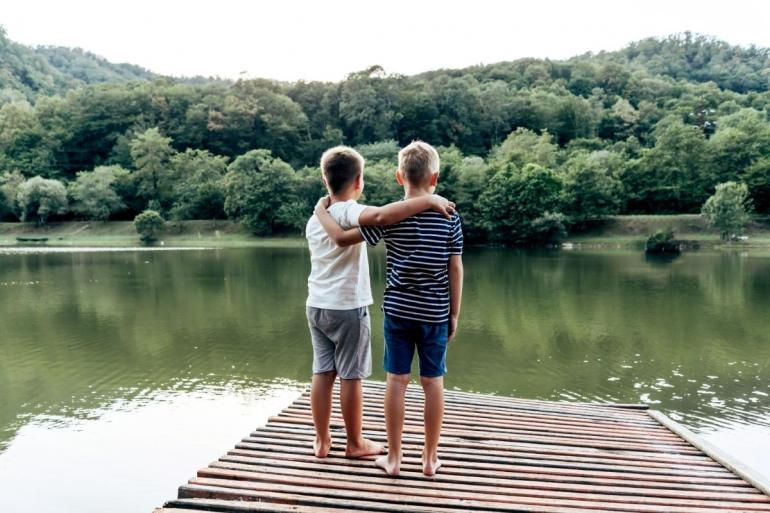
llove to tell stories. I grew up in Central Montana, so most of my stories involve the open country lifestyle of ranch living near Lewistown. The setting allows, or at least did then, all kinds of mischief that boys, just being boys, could possibly get themselves involved in.
Most of these adventures involved my best friend Tom, who was 11 months older than I was. His 11 months of advanced age, however, did not always translate into better sense.
When we get together and reminisce, he will admit I was gifted with much better sense, or at least a modicum of caution that he lacked. My good sense allowed us to think a few things through that may have saved limbs or possibly lives. But to this very day, we are still best friends. After all these years we can still find an adventure or two. We did everything together then, and only time has separated us. Now, he still resides on his ranch outside of Lewistown, and me on mine outside of Havre.
The adventures of a young man in the environment of mid-century Montana, involve hunting, up and down the crick, (creek if you're not from Montana), with bows and arrows, graduating to light caliber guns as we got older, and into heavy calibers by 12 or so. By older, in the above sentence, I mean 10 or so. We both became very good shots, and we liked to think that we could have easily qualified as sharpshooters if we had gone into the military. I remember once he shot a duck out of the air at about 75 yards with his .22 rifle. It was an awesome shot to have pulled off in the first place, but when we inspected our quarry we found he'd struck it right in the head, sparing all the meat.
We had duck for dinner.
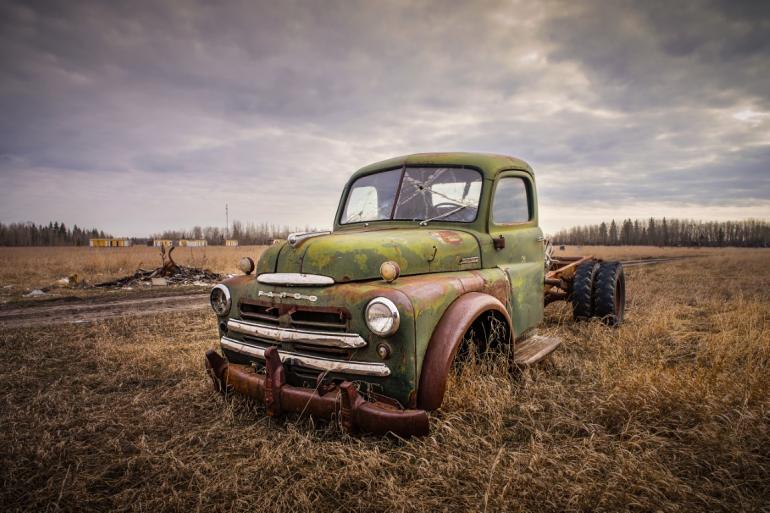
The crick, as we called it, was a good source of entertainment during the winter. The ice on it would freeze over when it got real cold, and then we'd go ice busting, which involved stomping or jumping on the ice to cave it in. Yeah, we got cold and wet, but we always made it back to the house and a hot bath before it turned life-threatening, nor did we lose any toes or fingers to hypothermia. It wasn't as dangerous as it might sound, due to my aforementioned good sense; we knew where it was too deep to risk it, and for the most part, it being a small crick, it was safe enough.
And, after all, we knew that heavy shivering was an early sign of hypothermia, so when we really got to quaking, we took that as a sign that we should maybe start heading in.
We loved fireworks, too. We always laid in a good supply near the 4th of July, so that we had explosive power year-round. Now you've got to realize that, where fireworks are concerned, today's rinky-dink little poppers don't hold a roman candle to the cornucopia of destructive capability available back then. You could buy M80's, Cherry Bombs, and Silver Salutes (the latter big enough to blow your hand off, probably why they're not available today). They also had waxed fuses, so they would burn underwater, giving rise to the tantalizing possibility of even more fun.
For example, you could place a sardine can (the old kind you opened with a little key attached) in a pan of shallow water, just deep enough for the rim to use water pressure as a concussive force in the explosion. Light the fuse, cover M80 with said sardine can, and run like hell. You could blow the sardine can clean out of sight. This provided lots of amusement, but the family did not eat a huge amount of sardines, so the ready availability of cans became the limiting factor. You could also do it with a coffee can, of course, and while still undeniably impressive, they would not go completely out of sight. As I assume the statute of limitations has run out, I can now tell you that you can even fish with the old firecrackers, as well.
The old roman candles were also a source of many hours of amusement as well. We measured out the approximate distance that they could shoot fireballs, then placed ourselves just inside the danger zone and shot at each other. Dodging flaming balls of fire, as you might imagine, is pure delight for the average boy, and pure ecstasy for us!
Tractors and trucks were fun, and we were allowed to drive the ranch's older tractors and/or trucks at a very early age. Tom could operate a tractor from six, and trucks with manual clutch shortly after that. This available transportation source gave us access to the whole ranch, which to us young boys seemed huge. In hindsight, viewed from my present 550-acre ranch, the Flat Broke Ranch, it turns out it was huge at more than 2500 acres. The front end loader and tractor made building bale forts and such, from which we imagined the defense thereof against marauders, hostile Indians, banditos, and probably communists, too.
The big change in our basic transportation came when Tom's dad brought home a used Honda 50 for him. If you're old enough, do you remember them? They had a step-through frame, and a small buddy seat. The 50cc engine had three speeds and would run most of the summer on a gallon of gas. Suddenly we were no longer confined to just the home ranch.
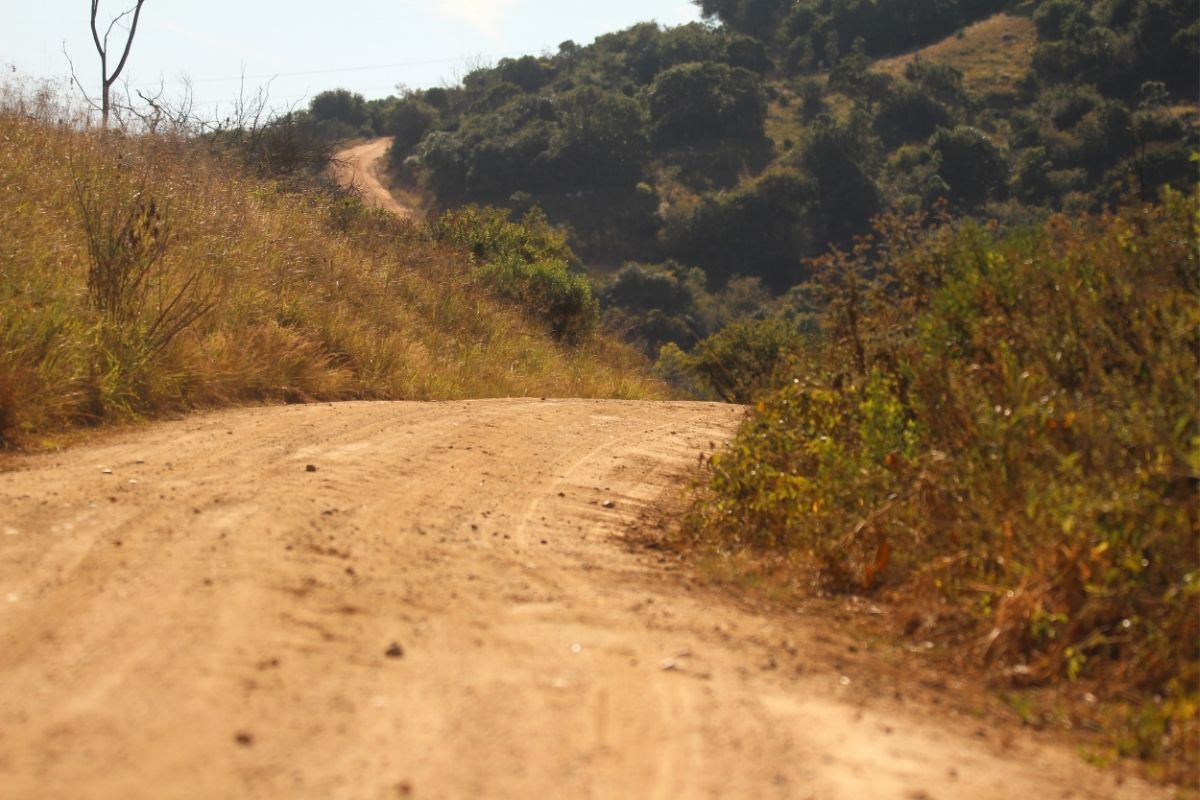 With the series of county gravel or dirt roads that stitched the nearby countryside together, we could go almost anywhere without taking a paved road, though we may have to cross one. At any rate, we didn't let not possessing a driver's license stop us.
With the series of county gravel or dirt roads that stitched the nearby countryside together, we could go almost anywhere without taking a paved road, though we may have to cross one. At any rate, we didn't let not possessing a driver's license stop us.
The little Honda sparked a new interest in us boys, motorcycles. Both of us have taken that interest to the extreme. Perhaps you have read some of my motorcycle tales? In my shop at present are four dirt bikes and at least one road bike. Many more have come and gone over the years as my four boys have grown up and gone through the various sizes. In his shop, I think I may have recently counted ten different bikes. Some may be owned by his grown sons, but in any case, the apple doesn't fall far from the tree, being his tree or mine.
With the little Honda, we now had access to the various ranges of Island Mountains that encircle Lewistown. Glance at a map of Montana, and you will notice that mountains indeed surround Lewistown. The native name for the area literally translates into "Snow Hole." We discovered gold panning as a hobby, checked out most, if not all the "cricks" that drained out of these mountains. We explored innumerable caves and thoroughly explored each and every nook or cranny in the hills. We rappelled down the cliffs, explored abandoned buildings, and wondered about the early families that occupied them. Of course, we checked out all the secret places that deer could hide, which sharpened our hunting skills, and at least in our minds made us mighty hunters as we aged into the teen years. We did bag some impressive horn sets; Boone n Crocket had nothing on us.
Several ponds on his mom and dad's ranch were stocked with fish by the fish and game department. His family generously allowed fishing and other water-related recreation on all of them. They were of course, in the middle of our stomping ground and we shared the passion for water recreation with the general public, so we took up scuba diving, spear fishing, expanded hunting to include Canadian geese and mallards.
The closest pond to the house was just far enough away that we were out of view and earshot enough that we reckoned who needed swimsuits? We found out much later that his four sisters often snuck up on us to see what we were up to, but no harm came of that. We imagined them playing with dolls and dipping crumpets in tea, at things called a tea party, and wouldn't trade our fun things, like explode stuff, shoot guns, and climb on things, for all the frankincense owned by all the sheiks of Araby. Now, viewed from the enlightened vantage of modern times, it must be admitted that genuine progress has been made: now women can do fun things too.
On the side of the nearest pond to the house, there were huge cottonwood and willow trees that we could hang a rope out of, hooked to an old tire, and swing half out over the pond before letting fly and going for a swim. We found out the girls used our tire swings also, as our hummingbird attention spans were so short that we would abandon our post, and they would invade. So I guess they got to have some fun after all.
One of the local apiaries placed hives on the ranch to take advantage of the alfalfa crop that his dad grew for hay to feed the cattle in the winter. Alfalfa honey is considered one of the best varieties of the sweet treat, so we made homemade bee suits and had fun with the bees, too. Yes, we got stung a lot, but over the years, we perfected the suits, and stings occurred less and less often. The result of so many stings had opposite effects on us two boys; Tom got allergic to stings worse and worse until now a bee sting for him means swelling up into a balloon. On the other hand, I hardly even feel a bee sting anymore, and in fact, may get just a little more powerful every time it happens.
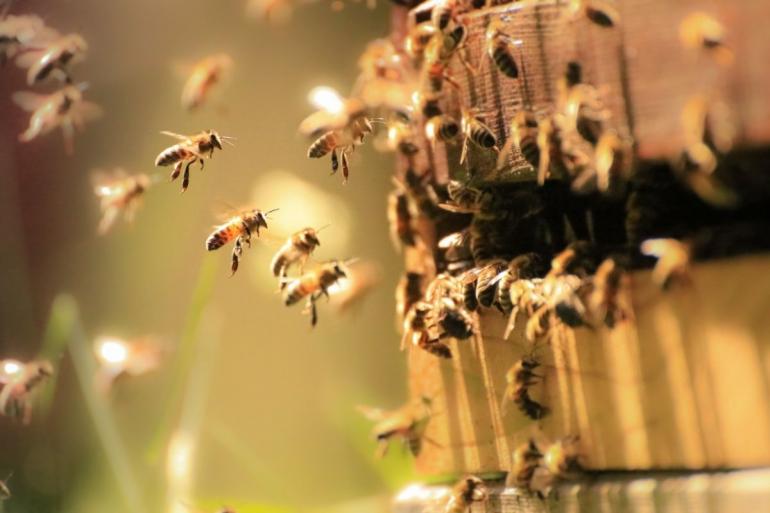
Tom's ranch had a gravel pit on it that was essentially abandoned, they took a load of raw gravel out occasionally, but the huge piece of steel that funneled the raw gravel onto the crusher was lying sideways on top of the hill. So one day we were reading on the side of a box of 30-06 ammunition where it says caution dangerous for well over a mile. So we measured off the mile in the old farm pickup and set up the old funnel as a target.
It occurs to us that someone may have shot at it before, so it needed a careful inspection. Even with us being bonafide sharpshooters, it took a few shots to zero in. But once hit with a 180-grain bullet, it let out a satisfying ring that we could hear over a mile away. So we emptied a box at it because our goal is to see if, indeed, it would still be dangerous at that range. We put dents on 1¾ inch steel and concluded (case closed!) that the box was accurate. We were fact-checkers extraordinaire. Wait a minute, Tom says my dad bought a box of armor-piercing rounds at an army surplus store, let's see if they can really punch through armor!
I know where he hid them, he won't miss a few.
So one day we're looking for something in the machine shed when we notice a small package up in the rafters, wrapped in an old gunny sack. Tom said he'd never noticed it before, and he wondered what it was? So up into the rafters he climbs and pitches me the package, and upon inspection, we find about 30 sticks of dynamite. Hum this could be fun we both think at the same time. The sticks were obviously very old. We were thinking from the looks of them they had been put there by Tom's grandad. So don't we need blasting caps, I ask. Tom says no, John Wayne shoots them with his .45 Winchester. So we head into the house for the Winchester.
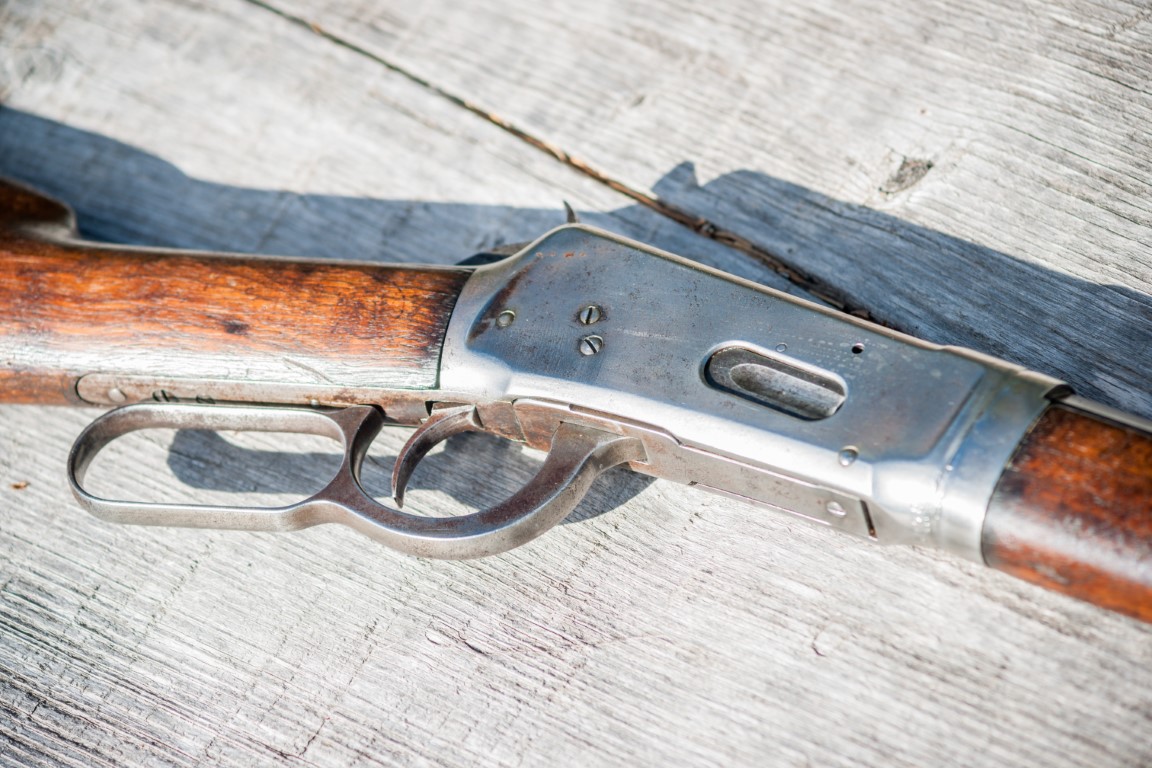 Turns out you do need the concussion of a blasting cap to set one off, the Winchester was found useless even after several direct hits. We took the stick that was now shot up to the shop for dissection. The nitroglycerin had precipitated out of the sawdust and could be picked out with tweezers. I told him If we put one of the bb sized balls of nitro on the anvil and wack it with a hammer I'd bet it would go off. The only remaining question was how much is safe? Let's be safe and start small, I said, exercising my good sense and cool-thinking. Also, some ear muffs and goggles might be in order.
Turns out you do need the concussion of a blasting cap to set one off, the Winchester was found useless even after several direct hits. We took the stick that was now shot up to the shop for dissection. The nitroglycerin had precipitated out of the sawdust and could be picked out with tweezers. I told him If we put one of the bb sized balls of nitro on the anvil and wack it with a hammer I'd bet it would go off. The only remaining question was how much is safe? Let's be safe and start small, I said, exercising my good sense and cool-thinking. Also, some ear muffs and goggles might be in order.
Our first try yielded ear ringing results and brought the hired hand on the run. Lucky for us, we had re-hid the rest of the sticks, and as such, saved some fun for another day. Let me just say at this point, Tom's dad's hired man was not amused. We thought his reaction at the time was a tad overboard.
So one day, after a cooling-off period, we noticed the hired man leave for town in one of the ranch pickup trucks. Recognizing this was our chance, we took a stick of our precious dynamite and an M80 or two to serve as a makeshift blasting cap.
Knowing that this had an element of danger to it, my good sense and caution required us to be a safe distance away. We proceeded to the ranch dumpsite, where we figured our destruction might go unnoticed. We tried a trail of gasoline up to the M80's fuse to see if it would allow us some running distance. It worked, so we settled on a mixture of 2/3 gasoline to 1/3 diesel fuel, both in ample supply on any ranch, as our now slowed-down fuse. We placed our contraption under an overturned bathtub in the dump, left-over from a recent remodeling of the ranch house.
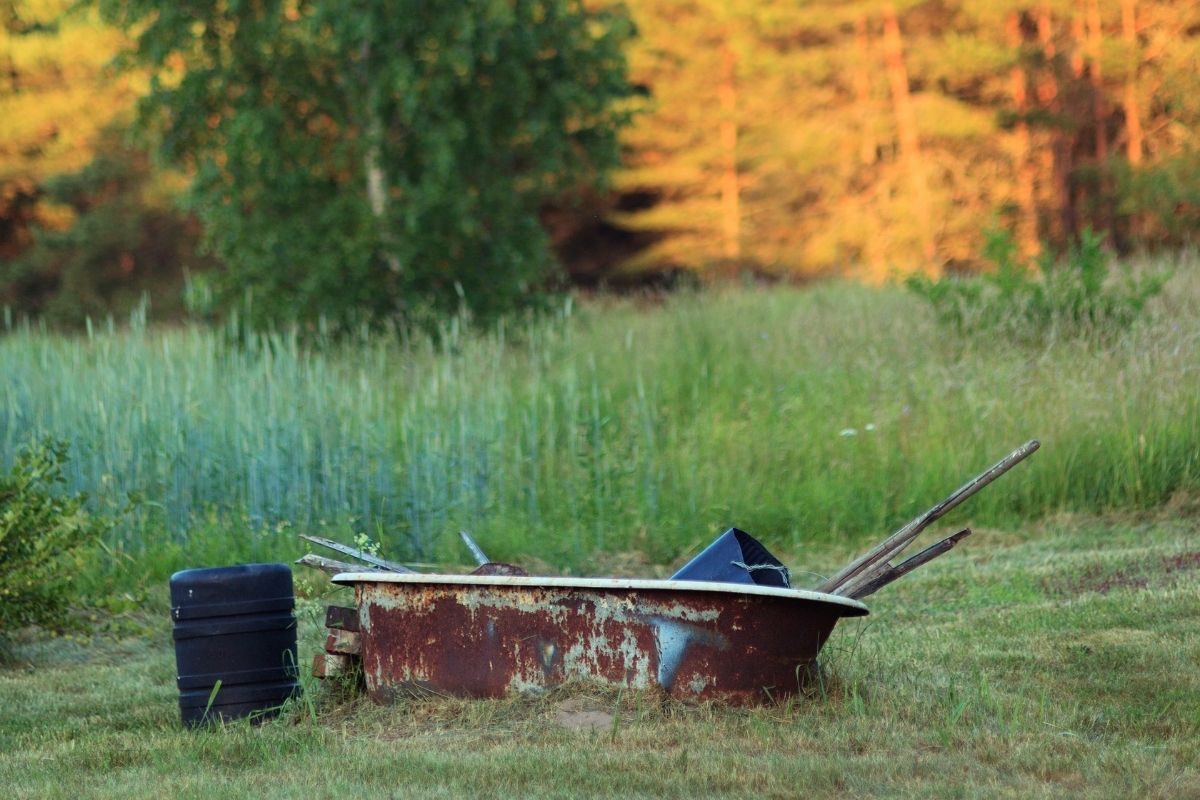 Back in those days tubs were made of cast iron. We hid in a ditch type depression of the earth near enough to still see the explosion. We dug it what even I, as our volunteer safety inspector, reckoned must be a safe distance.
Back in those days tubs were made of cast iron. We hid in a ditch type depression of the earth near enough to still see the explosion. We dug it what even I, as our volunteer safety inspector, reckoned must be a safe distance.
Ka-boom! It worked! A few seconds later, we hear what we both described later as a helicopter sound. A whoop-whoop-whoop type of sound, like something substantial was circling above us.
We couldn't see what, as we peered skyward, but sagely assumed it had something to do with our previous kaboom. It turned out to be the entire bottom of the old tub returning to the earth in a very unpredictable flight path, due to its odd shape and said circling motion.
When it hit the ground, it hit at the angle an ax strikes the chopping block and stuck in at least 2 feet deep. At that very moment, we looked at each other and decided we were lucky we had survived. We needed to be more cautious, both in distance required, and also the choice of objects to explode.
Possibly the worst experience we had playing with explosives, came a few weeks later. We noticed that one of the ranch's cows had been drug to the dumpsite, and she was getting quite ripe, so bloated up that her legs stuck up in the air. I have always had a weak stomach and could not even get close to her, myself. Tom had a stronger constitution and, with a huge breath of held air to place a stick under her, he lit the fuse, again using a trail of gas, diesel mix. Let's just say we learned a physics lesson, on gravity: what goes up, must come down. And another: what smells bad contained in a carcass will smell much worse when it comes down in a vaporous rain over the entire countryside. I think for sake of my reading public, I will leave it at that.
What did not cross our minds was to not use the remainder of the sticks, our lucky discovery. Instead, we looked for safer sites and thought it might even be neat to have a dual purpose, like blow a stump or something. Tom said he knew where there was a plow boulder, (he called it), and his dad would be impressed if we loosened it up and drug it out of the hayfield with the tractor. He said his dad had once said the boulder was placed there by the last receding glacier, and he had been trying to get it out of the hayfield ever since. Dynamite made it a fun task.
Speaking of plow boulders, I am reminded of another story. Lewistown had a Civic Center in the center of town, and out front of the block-long building, the city had placed a few rocks on the corner of the lot, examples of nature's geologic wonders. One of the rocks was a giant piece of petrified wood. Another was a rounded sandstone beauty about the size, and shape, of a snowman, which appeared to don a sombrero hat. A smaller one was a well-used bowl that local Natives had used to grind grain or roots and berries.
All of the rocks were displayed well on handsome concrete slabs in a nice L shaped row. It was an admirable artistic feature for the civic center. One night, Tom and I rounded the corner from Juneau Street onto 5th Ave, and that huge boulder in the back of his pickup rolled to the side, causing a terrible noise. Tom said, what the heck? We stopped on the corner of 5th Ave., just outside the civic center and the aforementioned art display. Tom said, we can't have that rolling around back there; it will wreck the pickup! I point to the rock art and said "that would be a good place for it." With a little shared giggle, that is where it ended up. It remained there another 20 years, at least. I did move out of Lewistown, but it was still there long after, and I chuckled each time I returned home for a visit. The only difference was that there was no concrete base on ours. Whoever maintained the grounds lovingly clipped the grass around it from then on.
Boys will be boys, just as old men will be old men. As a boy, I had adventures. As an old man, I remember them. There are worse arrangements, I suppose.

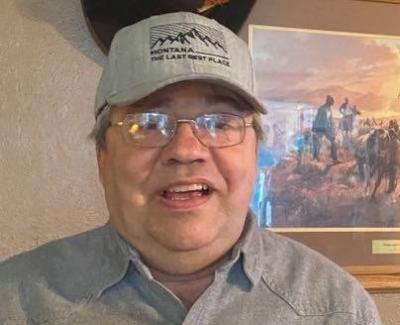
Gary Shelton was born in Lewistown in 1951 and has been a rancher, a railroader, a biker, a teacher, a hippie, and a cowboy. Now he's trying his hand at writing in the earnest hope that he'll make enough at it to make a downpayment on an RV. Hell, scratch that. Enough to buy the whole RV. He can be reached at [email protected] for complaints, criticisms, and recriminations. Compliments can be sent to the same place, but we request you don't send them - it'll make his head big.
Leave a Comment Here
I’ve returned several times, my favorite state.

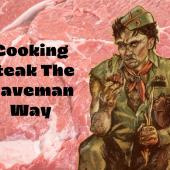
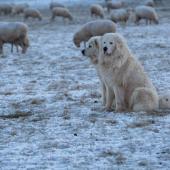




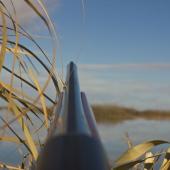
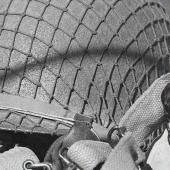
- Reply
Permalink